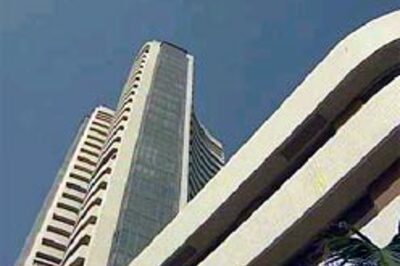
views
Petrol and diesel prices in the country have been rising for the past fortnight. Petrol has got costlier by Rs 10 in the past 16 days to stand at Rs 105.41 per litre in Delhi currently, while diesel stands at Rs 96.67 per litre. In Mumbai, petrol and diesel prices per litre stand at Rs 120.51 (increased by 84 paise) and Rs 104.77 (increased by 85 paise), respectively.
The prices in India vary from state to state due to variation in local taxes. Here’s the break-up of taxes and other charges on petrol that a customer pays:
Break-up of Taxes, Charges on Petrol
Let’s take an example of April 1 price of petrol in Delhi, when the retail price of petrol was Rs 101.81 per litre, according to a notification from Indian Oil Corporation.
The base price of petrol on April 1 stood at Rs 53.34 per litre. Above that, a freight charge of 20 paise was levied on every litre. These two components make dealers’ charges (excluding excise duty and value-added tax) at Rs 53.54 per litre.
Apart from this, an excise duty of Rs 27.90 per litre is levied by the Centre. There is also a state value-added tax (VAT) of Rs 16.54, including VAT on dealers’ commission. An average dealers’ commission of Rs 3.83 is also added to per-litre petrol. These all taxes and charges add up to Rs 101.81, the petrol price of April 1.
Break-up of Taxes, Charges on Diesel
The calculation of diesel is also based on the April 1 retail price, when it stood at Rs 93.07 per litre, according to the IOCL notification.
The base price of diesel in Delhi stood at Rs 54.87. A freight of 22 paise was charged on that. The two factors take total price charged to dealers (excluding excise duty and VAT) at Rs 55.09 per litre. Over and above that, an excise duty of Rs 21.80 is charged, apart from a VAT of Rs 13.26 (including VAT on dealers’ commission). Average dealer commission stands at Rs 2.58 per litre. These all taxes and charges add up to Rs 93.07.
Recent price hikes
The retail prices of petrol and diesel in India are linked to the international prices of crude oil. And, the global oil prices have been at elevated levels since the time Russia invaded Ukraine due to which global oil supply halted.
After Russia approved a military operation in Ukraine on February 24, the Brent crude oil prices hit USD 100 per barrel for the first time since 2014. In the following days, the US’ WTI crude futures even skyrocketed to USD 130.50 a barrel, its highest since July 2008, before retreating. Brent also hit a high of USD 139.13, also its highest since July 2008.
The Centre may choose to reduce the impact of higher crude oil prices on consumers by cutting excise duty on both petrol and diesel. On petrol and diesel, excise duty is charged by the central government, while VAT is charged by the state governments. When the Centre reduces rates on petrol, it cuts excise duty; while states reduce value-added tax on petrol when it seeks to cool the prices down. Apart from these, a 1 per cent cess is also charged on petrol prices.
Variation in Prices Across States and Regions
The variation in prices of petrol and diesel is on two counts — differences in freight charges and different VAT rates across states.
Freight charges depend upon the distance between the refining plant and the petrol pump; the farther is the petrol pump from the oil refining unit, the more is the freight charge. Because of this, the prices may vary from region to region.
Also, different states levy different VAT rates, due to which prices vary from state to state. For instance, the Odisha government levies 32 per cent VAT on petrol, while Uttar Pradesh levies 26.8 per cent VAT or Rs 18.74 per litre, whichever is higher.
Read all the Latest Business News and Breaking News here

















Comments
0 comment